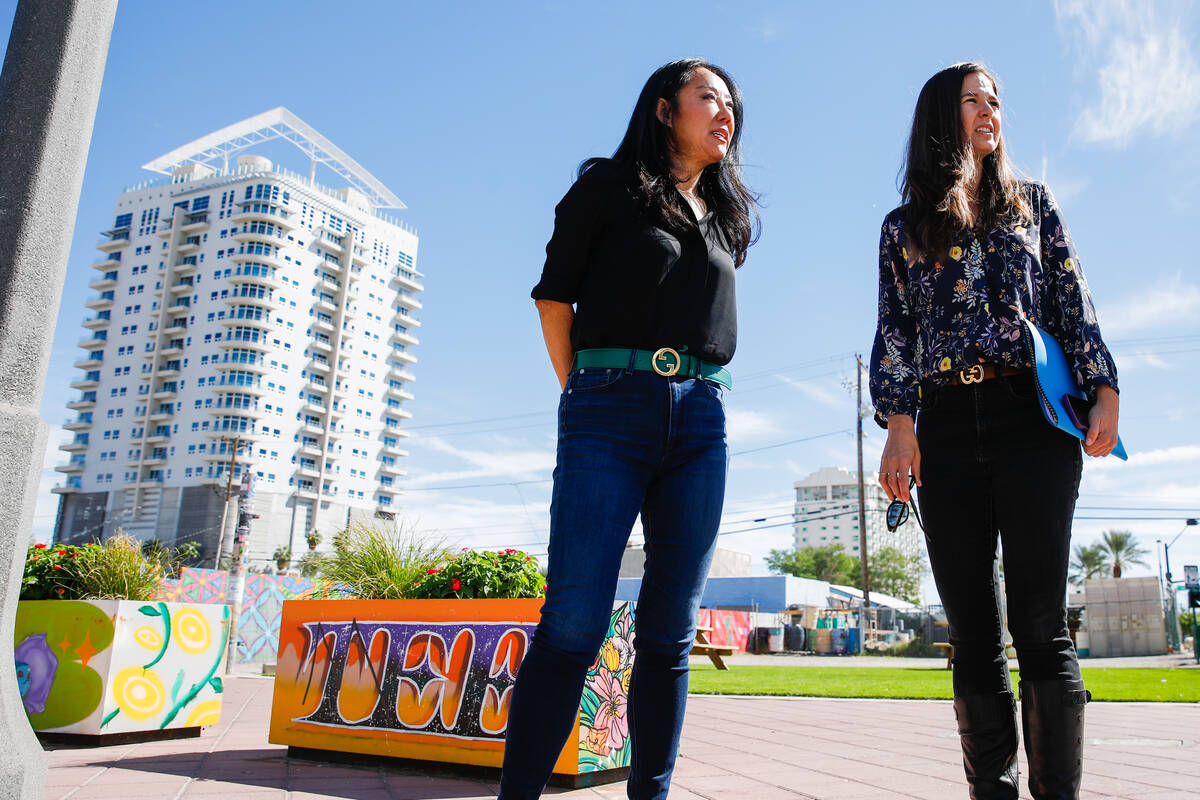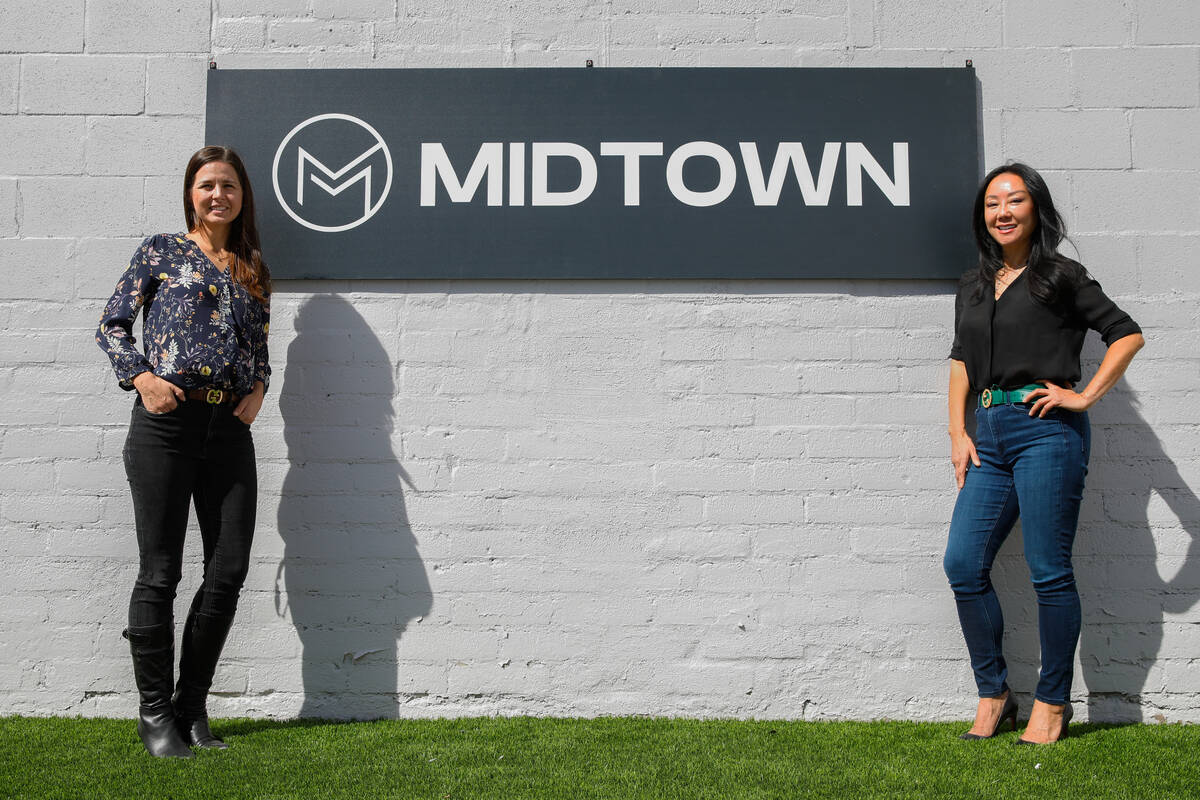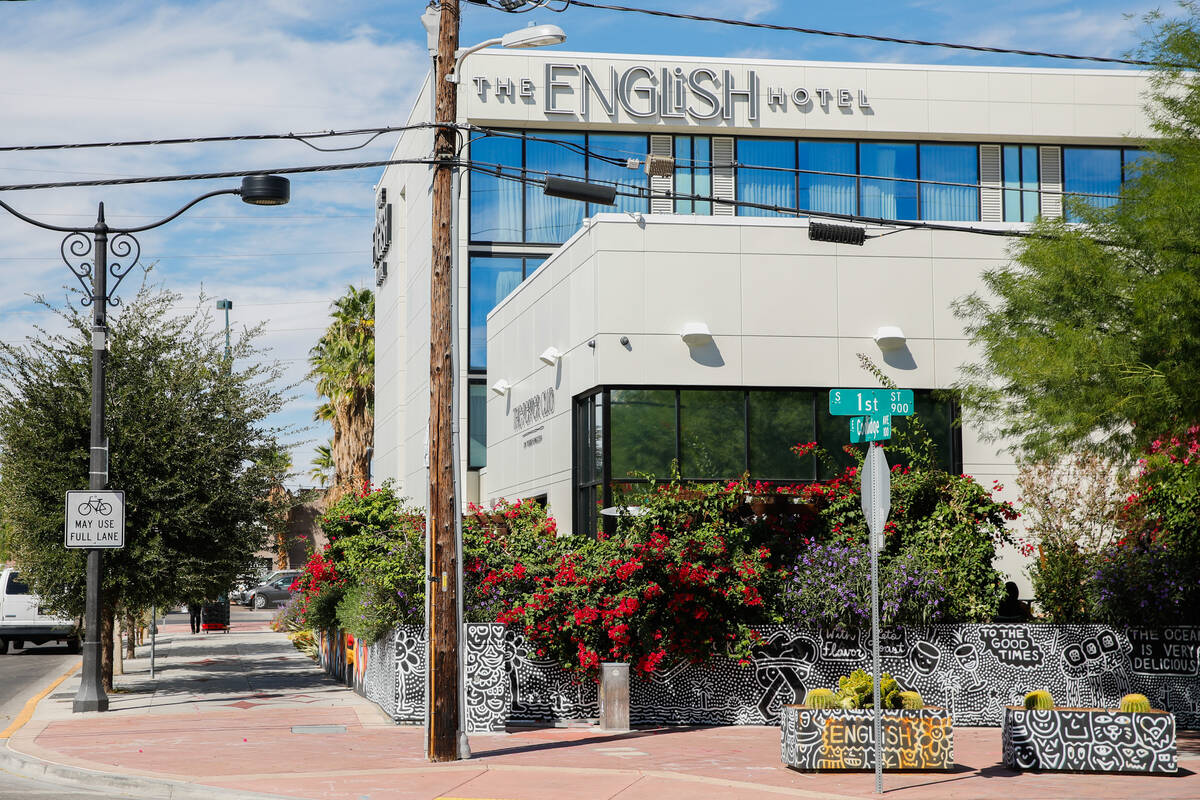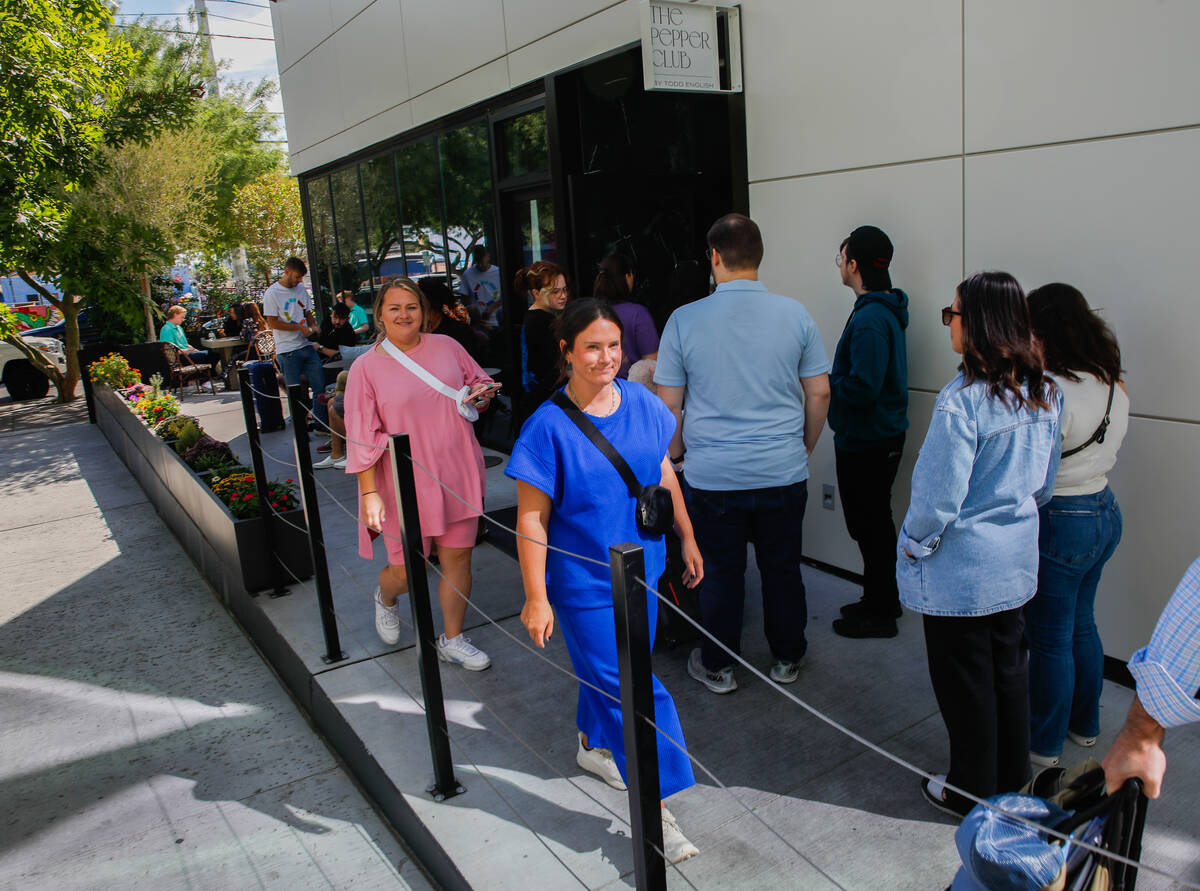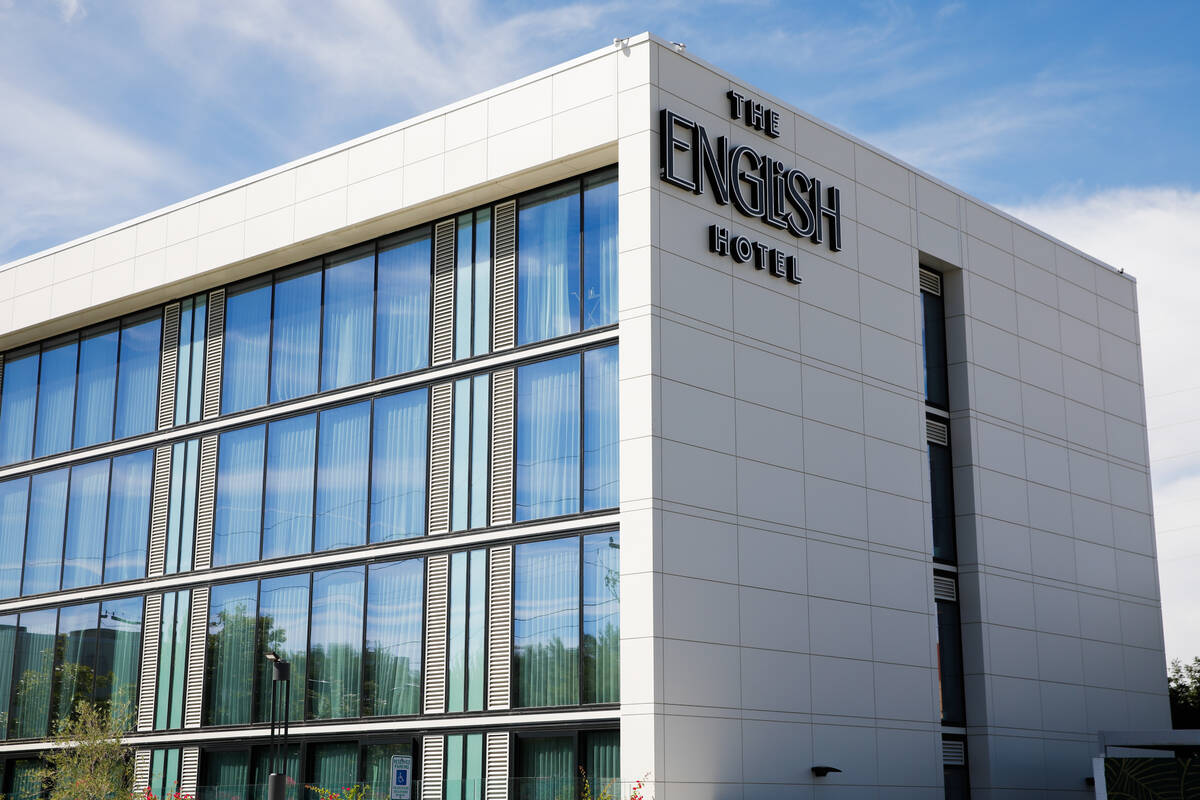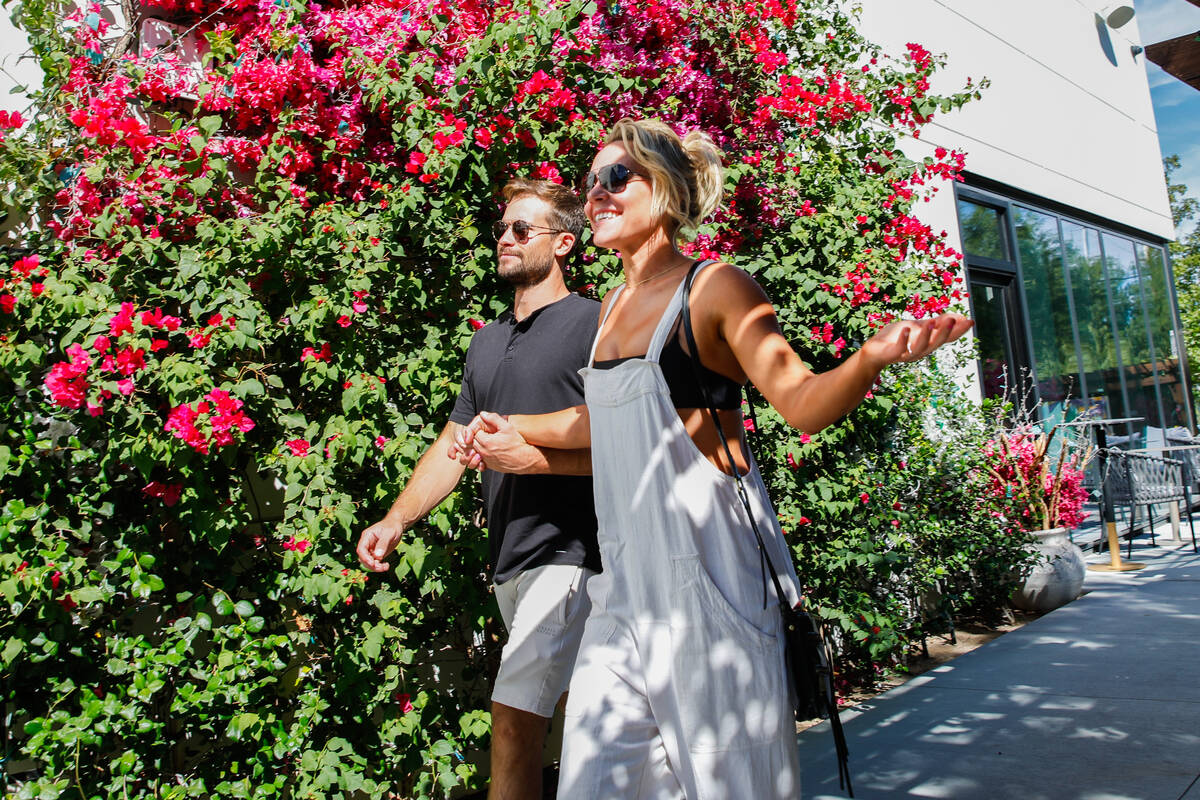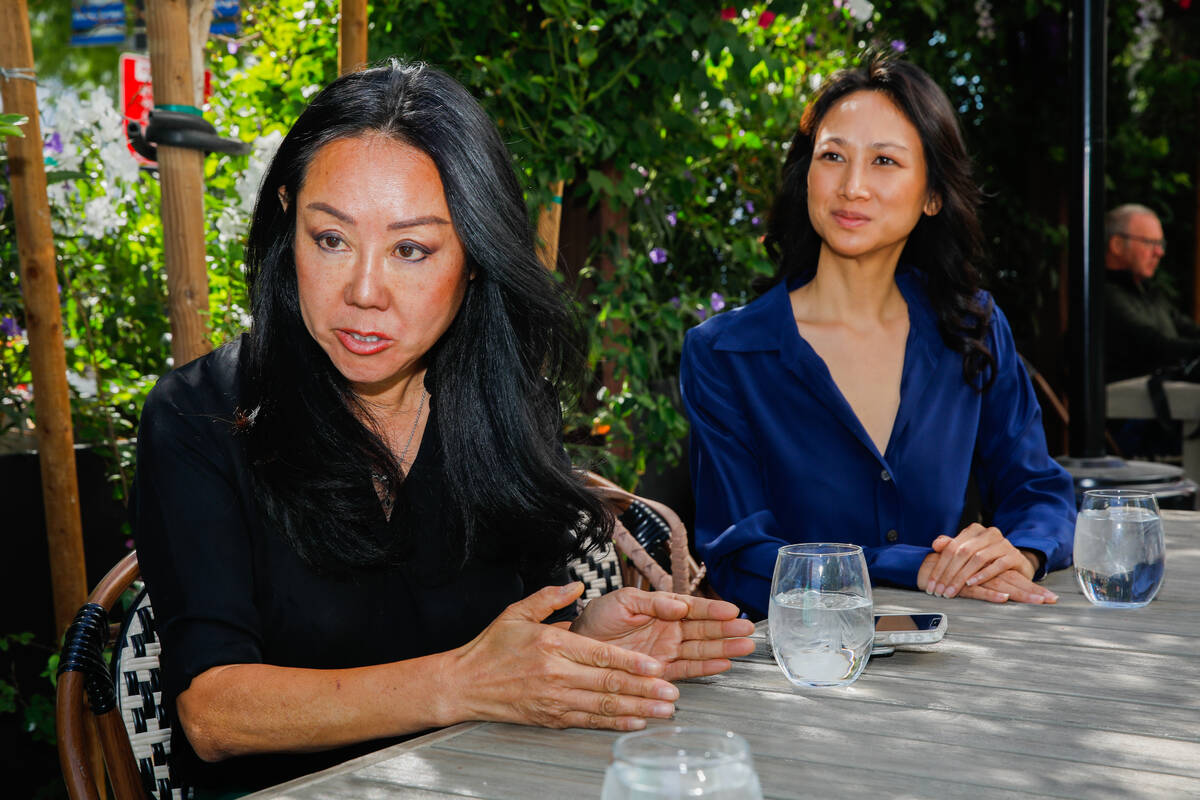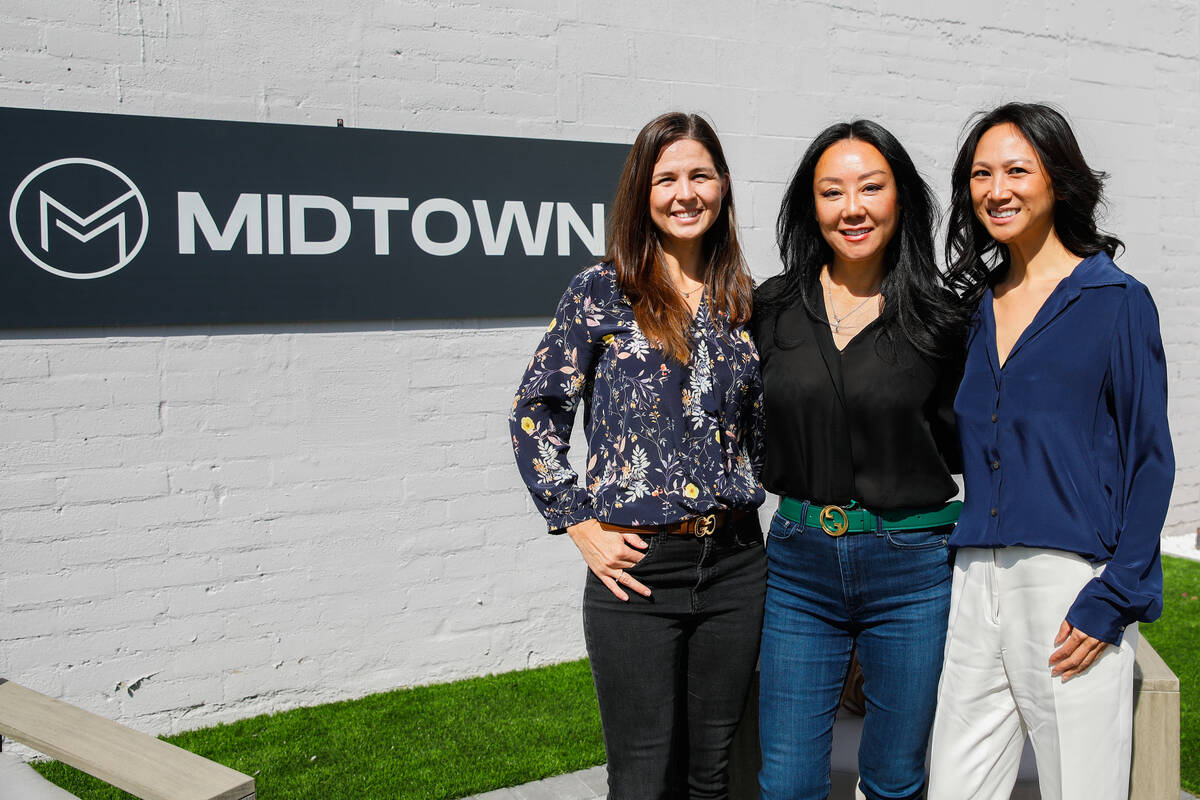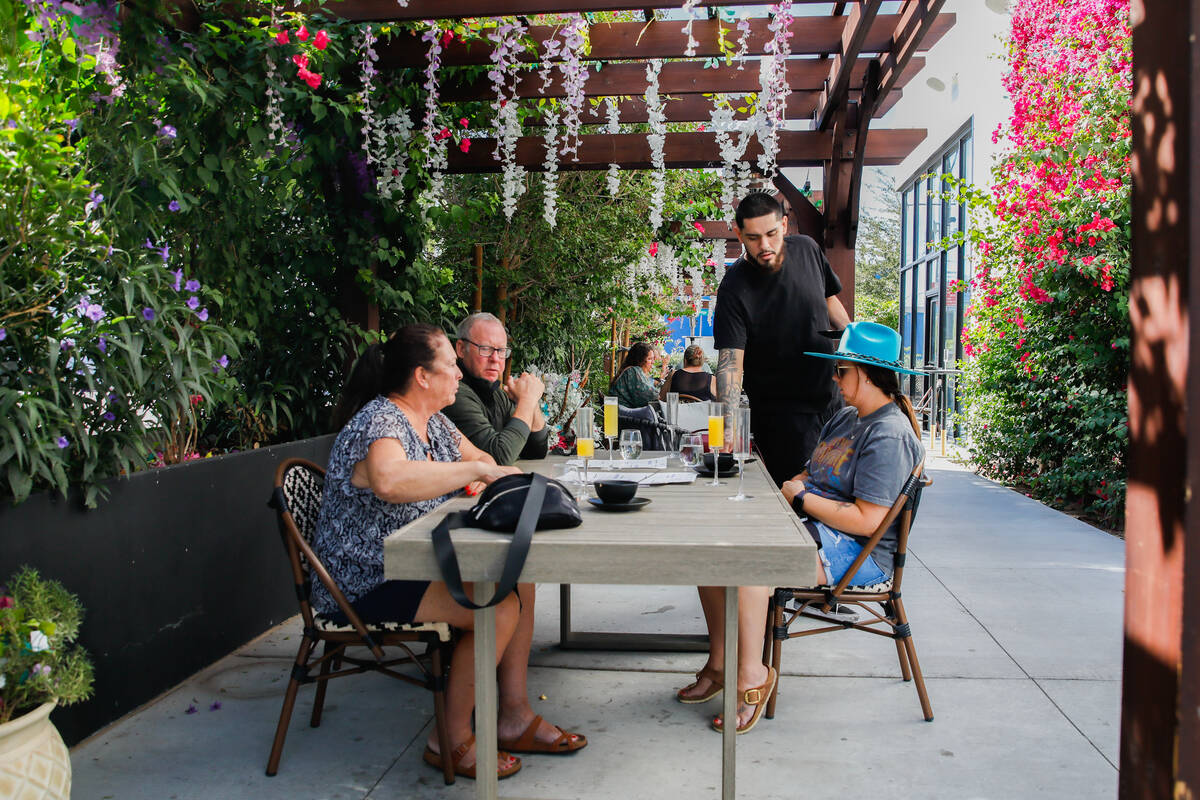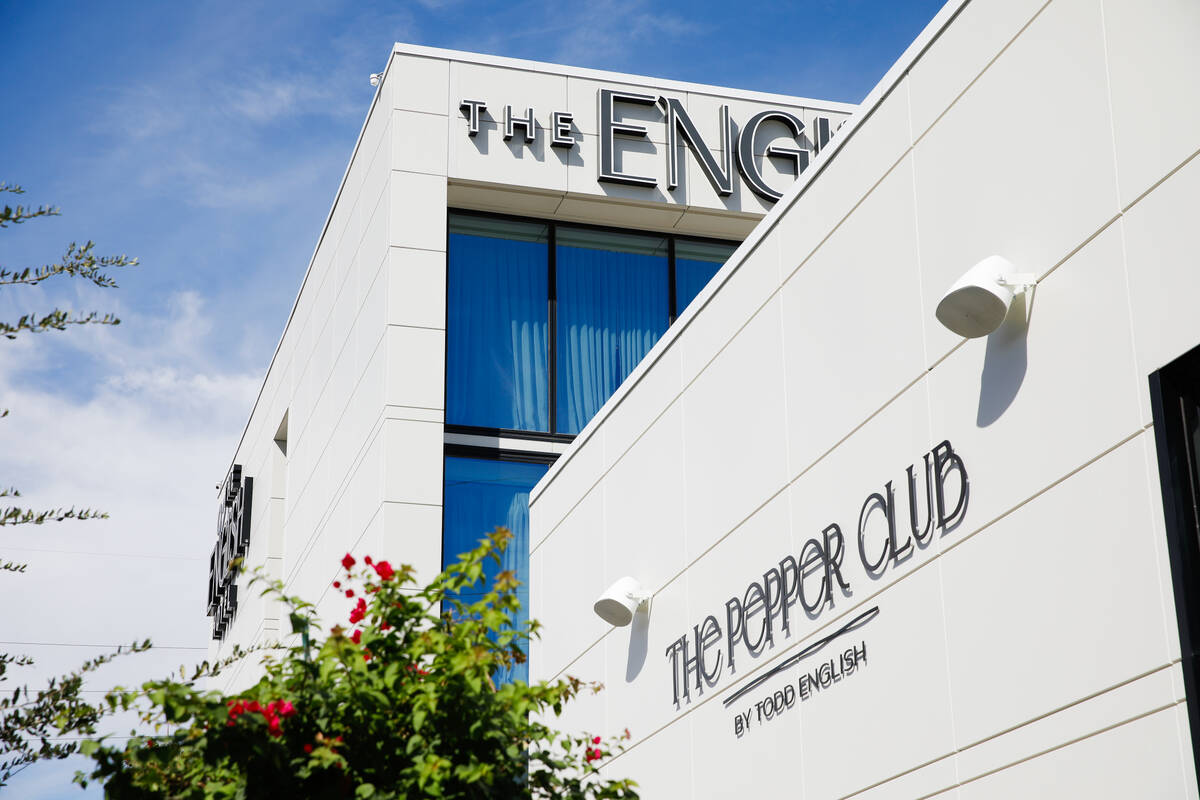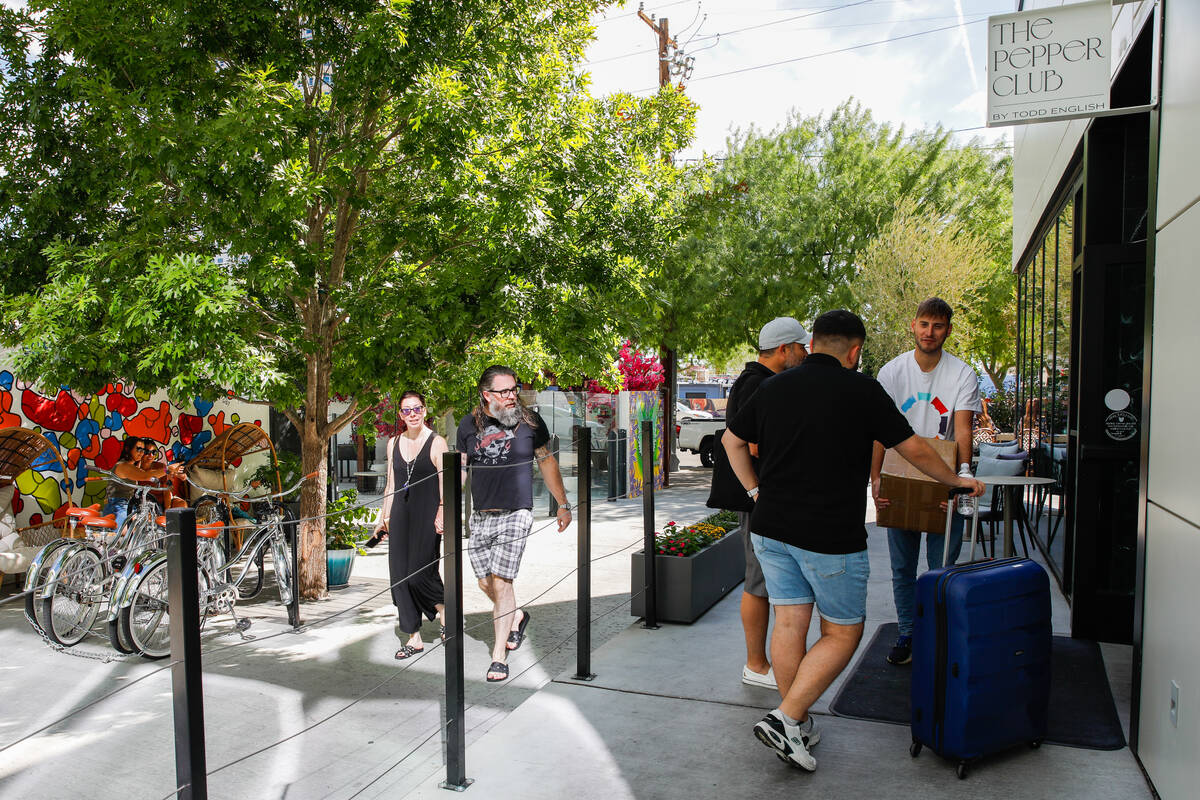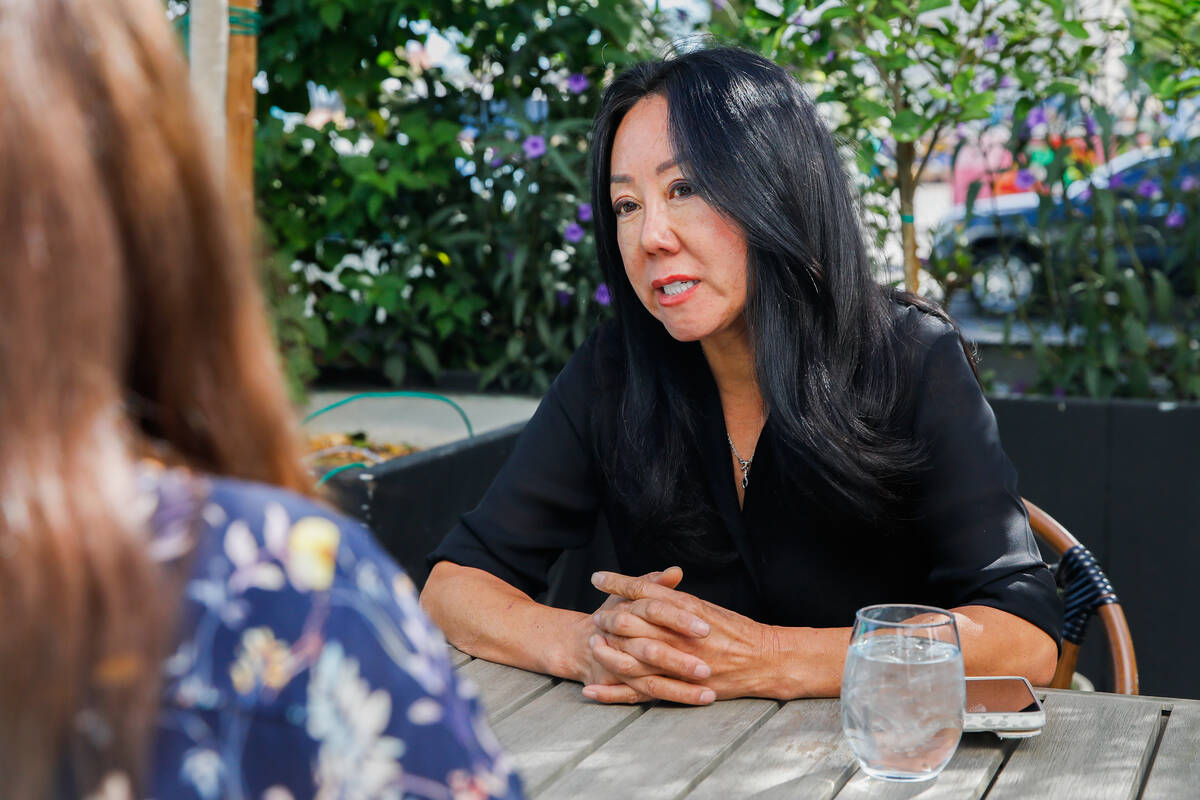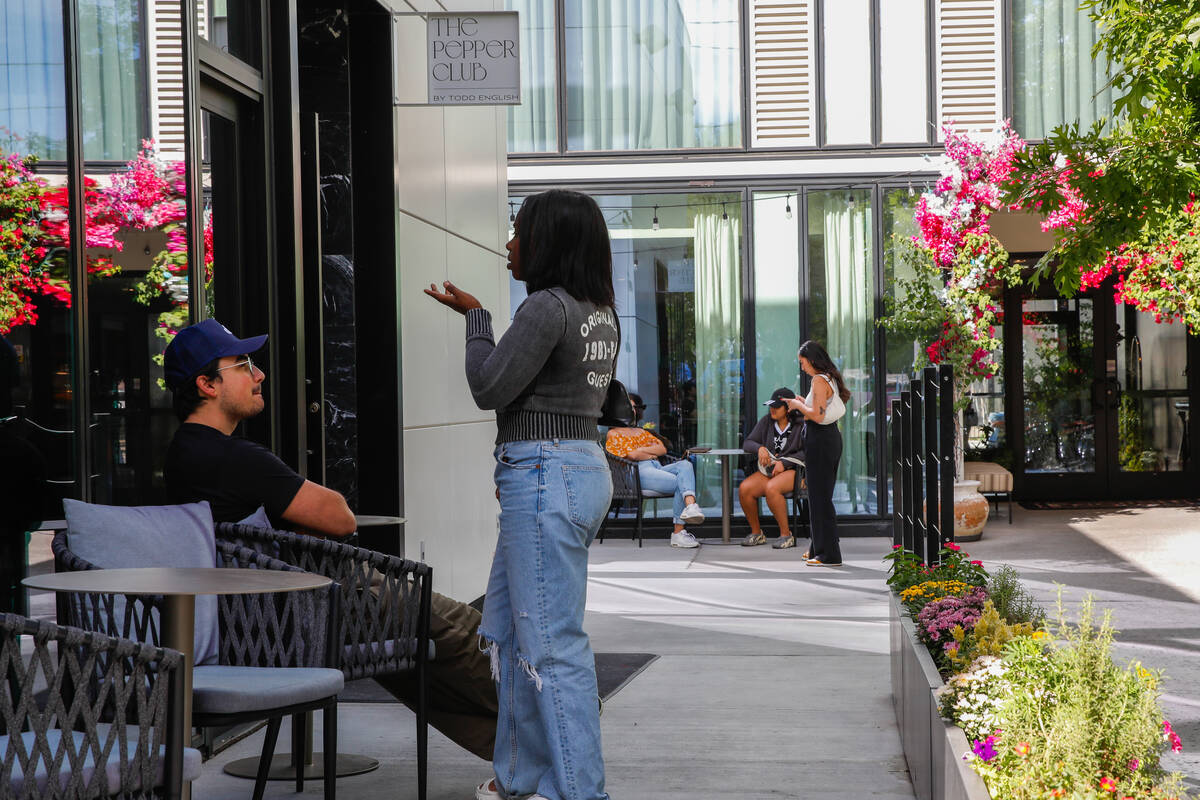You won’t need a car in this future downtown Las Vegas neighborhood
The developer of a planned mixed-use development near downtown wants to create a new neighborhood in the heart of Las Vegas.
Plans for the project dubbed Midtown, includes 3,000 residential units and 100,000 square feet of commercial space, with enough retail and food offerings in its buildings to create a 15-minute city type of neighborhood where residents can live an urban lifestyle and go about their daily lives without needing a car, according to developer Z Life Co., which also developed the English Hotel.
“It’s for the people that are moving out of San Francisco and out of L.A. that love the urban feel, that want to be able to bike or walk to work,” said Anna Olin, chief operating officer and co-founder Z Life Co.
Weina Zhang, CEO and co-founder of Z Life Co., said the project is called Midtown since its meant to connect the downtown area of Las Vegas to the Arts District.
The project, which the developers say will take a decade to fully construct, will help fill the need for homes around the Arts District with attainable housing — affordable for those making at or around the median income for the valley. Zhang said the goal also is to supercharge existing and new businesses in the area by creating multifamily units for customers to live in the area rather than just relying on those driving in. Other plans include developing a Tesla rideshare program to encourage those living in the development to not have a vehicle.
Because of Z Life Co.’s success with the English Hotel and The Pepper Club restaurant, both affiliated with Chef Todd English, Becky Miller, president of the 18b Arts District Association, said the Midtown project sounds “fantastic” for the surrounding community.
“This is a proven company, they were able to get the English Hotel and (The Pepper Club) built during COVID, when hardly anything else was happening,” she said. “We really enjoy seeing an existing Arts District business expanding and developing more along the same lines of what they already have.”
Building a 15-minute city
The Midtown project will be completed in phases, with the first including five buildings with 651,000 square feet of office, retail and restaurant space and 856 residential units.
According to initial plans, the first two buildings will be a mixed-use apartment building and condominium tower to be constructed across from the English Hotel on First Street. These two buildings along with the English Hotel will make up the commercial and retail core of the Midtown development and will be called Midtown Plaza, Zhang said. The condo tower also will include office and coworking space.
Both could be completed in the next 20 months and open in mid-2025, Zhang said.
Olin said most of the residential units will be available for sale rather than lease. Sale prices are expected to max out at $799 a square foot.
The developers said they are seeking a biotech company to lease office space, while the retail space should be filled with businesses that people use every day such as hair salons, banks, convenience stores and potentially a health-food grocery store.
Olin said they are working to curate the retail space to make sense for the people who would live there and not lease large chunks of it to big-box retailers.
“In the 15-minute city model, it’s all about access to having everything in that one location,” she said.
Nicholas Irwin, an assistant economics professor at UNLV, said it will be vital for the Midtown project to secure necessary amenities and attractive retail and commercial offerings to lure residents as other popular areas in the Las Vegas Valley such as Summerlin with Downtown Summerlin and Henderson with the Water Street area have already developed places that offer more than just residential units.
“They’re putting stuff hopefully near where people want to live and giving them the amenities that they value,” he said.
As Z Life Co. is focused on filling its space with working professionals, they say there aren’t plans to add any gaming or late-night entertainment venues to the project.
“After 10:30-11 o’clock, the whole Midtown Plaza will close for sleep,” Zhang said. “When you go to party, go to East Fremont, when you go to a nightclub, you go to the Strip, and everything with food and beverage goes to the Arts District.”
Miller said she views it as a plus that Midtown isn’t planning to add gaming and the plan to be quiet before the clock strikes midnight works well with the Art District which usually settles down by that time outside of some special events.
“Their plan works well with what the long-term stalwarts in the Arts District have been working towards,” she said.
Pedestrian-centric
Another big facet of Midtown is that it’s being developed to deprioritize the use of vehicles and encourage its future residents to ditch their cars by bringing in the right retail and office users.
“We’re really in that kind of perfect sweet spot that you don’t really need to own a car, it’s not going to make sense if you can live and work down here in the same place,” Olin said.
Irwin said he thinks it’s a “great idea” to build a pedestrian-centric mixed-use development, but it can run into challenges in Las Vegas which has developed its urban planning with personal vehicles as the main method for transportation.
“Our pattern in the development of the city over time has been very car centric, it’s hard to sort of reverse that in little areas,” he said.
To run against the car-centric design of the Las Vegas Valley, Irwin said it’s important for future residents to be close to their jobs and plenty of alternative transportation options like public transport and rideshares are available to residents.
Olin said that’s attainable with its proximity to downtown Las Vegas, the emerging Las Vegas Medical District that includes UNLV’s Kirk Kerkorian School of Medicine as well as a plethora of government buildings and the under-construction $165 million civic plaza that is set to centralize the city of Las Vegas’ workforce.
There is also a plan to create a Tesla car sharing program for Midtown residents where one car is shared for every five residences, but exact details of the car share program are still being developed, Zhang said.
Building attainable housing
Z Life Co. said it can offer attainable housing at Midtown because of its in-house proprietary construction model called M8TRIX, which can construct a project at a cost that is 30 to 40 percent less than typical companies, Olin said. The M8TRIX system uses prefabricated steel frames in its ground-up construction, which is cheaper than other types of construction.
The same system was used to construct the English Hotel.
Contact Sean Hemmersmeier at shemmersmeier@reviewjournal.com. Follow @seanhemmers34 on X.



